News
Trump’s tech meeting focused on jobs, education, and more
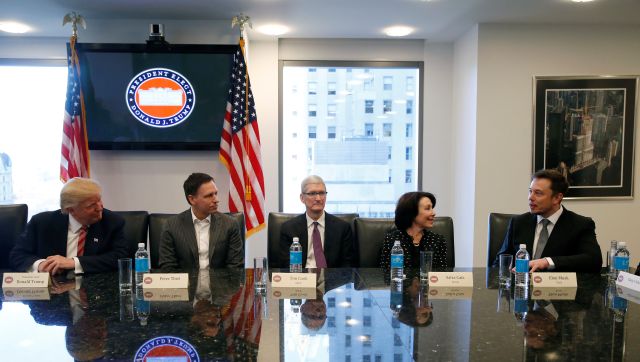
Yesterday’s meeting of the most influential technology leaders and the Trump transition team focused on several topics related to our national economy and its intersection with the technology sector.
YouTube featured a 3-minute or so live stream of Trump’s welcome to his top tier technology guests. The tension was palpable, as many present had not supported a Trump 2016 Presidential bid and now foresee less technology sector spending with Trump in the White House. Moreover, according to Andrew Bartels, a Forrester principal analyst, recent Trump appointments, such as cabinet secretaries, “are explicitly hostile to the mission of their agencies.” With a Trump administration leading the country, Forrester Research has cut back its growth estimate for the U.S. tech market in 2017 to 4.3 percent from 5.1 percent.
The individuals present often held dichotomous views on issues like net neutrality, dissemination of fake news, censorship, and antitrust issues. For example, the president-elect’s vocal stance on immigration, which could limit H1-B skilled worker visas as part of a clampdown on cheaper foreign labor, could create difficulties for companies like Facebook and Microsoft, as a change in their hiring practices would elevate their expenditures and affect their overall profitability.
Conversely, areas of agreement for the group of tech entrepreneurs were corporate tax cuts and repatriation of capital being held abroad, reports CBS News.
One topic at the 90-minute meeting between Trump and the tech CEOs was how to create a U.S. economy with home-grown and high-paying jobs. IBM CEO Ginni Rommety recently wrote an op-ed piece in USA Today discussing their company plans to hire 25,000 people in the U.S. and invest $1 billion over the next four years in “new collar” jobs via employee vocational training. “We are hiring because the nature of work is evolving – and that is also why so many of these jobs remain hard to fill.”
That “evolving” workforce demands new training, which was another important topic of conversation at the Trump tech summit. The U.S. workforce will require employees with skills that are relevant to jobs such as cloud computing technicians and services delivery specialists.
This focus on becoming a reflexive workforce was contained in remarks that Jeff Bezos of Amazon later issued. In a statement, he related how he “shared the view that the administration should make innovation one of its key pillars, which would create a huge number of jobs across the whole country, in all sectors, not just tech — agriculture, infrastructure, manufacturing — everywhere.”
That innovation will be crucial to obtain one Trump administration goal of higher pay across U.S. jobs, as the Bureau of Labor Statistics found that the area of highest job creation at the end of 2015 was home health aides, who earn less than $25,000 per year. That barely exceeds the U.S. poverty level for a family of four.
Those present included Elon Musk; Jeff Bezos of Amazon; Tim Cook of
Apple; Sheryl Sandberg of Facebook; Larry Page and Eric Schmidt of Alphabet, Google’s parent company; and Satya Nadella of Microsoft.
“This is a truly amazing group of people,” the president-elect said in a conciliatory gesture. “There’s nobody like you in the world. In the world! There’s nobody like the people in this room.” The tech leaders smiled politely at the president-elect, recognizing that the tech summit could provide a boost to big-cap technology stocks, which have lagged in an otherwise surprisingly robust post-election rally.
Future Trump administration quarterly meetings with the select tech leaders will be organized by Mr. Trump’s son-in-law and adviser, Jared Kushner.
News
Three things Tesla needs to improve with Full Self-Driving v14 release
These are the three things I’d like to see Tesla Full Self-Driving v14 improve.
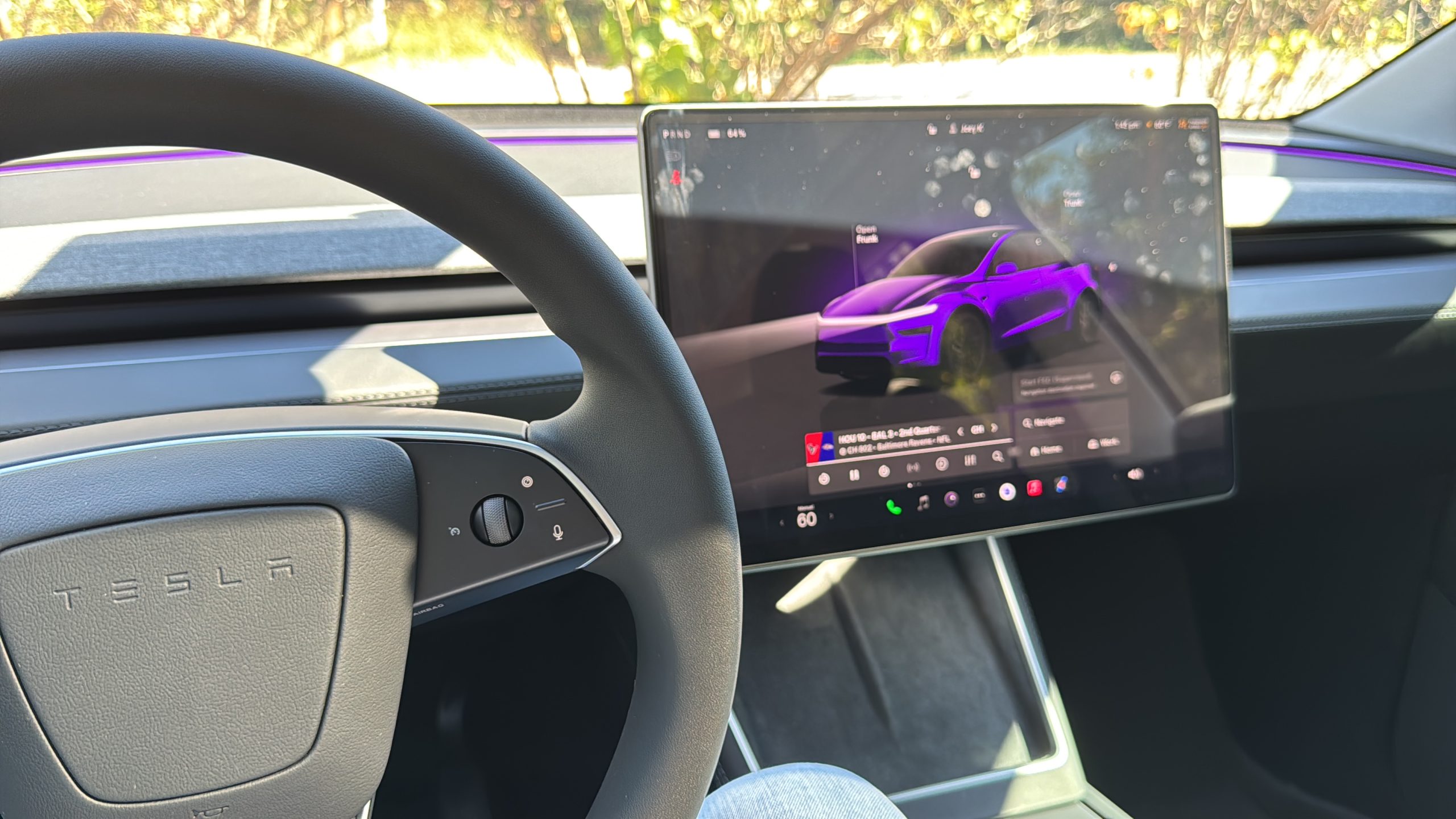
As Tesla plans to release Full Self-Driving version 14 this week after CEO Elon Musk detailed a short delay in its rollout, there are several things that continue to plague what are extremely well-done drives by the suite.
Tesla Full Self-Driving has truly revolutionized the way I travel, and I use it for the majority of my driving. However, it does a few things really poorly, and these issues are consistent across many drives, not just one.
Tesla Full Self-Driving impressions after three weeks of ownership
Musk has called FSD v14 “sentient” and hinted that it would demonstrate drastic improvements from v13. The current version is very good, and it commonly performs some of the more difficult driving tasks well. I have found that it does simple, yet crucial things, somewhat poorly.
These are the three things I’d like to see Tesla Full Self-Driving v14 improve.
Navigation, Routing, and Logical Departure
My biggest complaint is how poorly the navigation system chooses its route of departure. I’ve noticed this specifically from where I Supercharge. The car routinely takes the most illogical route to leave the Supercharger, a path that would require an illegal U-turn to get on the correct route.
I managed to capture this yesterday when leaving the Supercharger to go on a lengthy ride using Full Self-Driving:
You’ll see I overrode the attempt to turn right out of the lot by pushing the turn signal to turn left instead. If you go right, you’ll go around the entire convenience store and end up approaching a traffic light with a “No U-Turn” sign. The car has tried to initiate a U-turn at this light before.
If you’re attempting to get on the highway, you simply have to leave the convenience store on a different route (the one I made the vehicle go in).
It then attempted to enter the right lane when the car needed to remain in the left lane to turn left and access the highway. I manually took over and then reactivated Full Self-Driving when it was in the correct lane.
To achieve Unsupervised Full Self-Driving, such as navigating out of a parking lot and taking the logical route, while also avoiding illegal maneuvers, is incredibly crucial.
Too Much Time in the Left Lane on the Highway
It is illegal to cruise in the left lane on highways in all 50 U.S. states, although certain states enforce it more than others. Colorado, for example, has a law that makes it illegal to drive in the left lane on highways with a speed limit of 65 MPH or greater unless you are passing.
In Florida, it is generally prohibited to use the left lane unless you are passing a slower vehicle.
In Pennsylvania, where I live, cruising in the left lane is illegal on limited-access highways with two or more lanes. Left lanes are designed for passing, while right lanes are intended for cruising.
Full Self-Driving, especially on the “Hurry” drive mode, which drives most realistically, cruises in the left lane, making it in violation of these cruising laws. There are many instances when it has a drastic amount of space between cars in the right lane, and it simply chooses to stay in the left lane:
The clip above is nearly 12 minutes in length without being sped up. In real-time, it had plenty of opportunities to get over and cruise in the left lane. It did not do this until the end of the video.
Tesla should implement a “Preferred Highway Cruising Lane” option for two and three-lane highways, allowing drivers to choose the lane that FSD cruises in.
It also tends to pass vehicles in the slow lane at a speed that is only a mile an hour or two higher than that other car.
This holds up traffic in the left lane; if it is going to overtake a vehicle in the right lane, it needs to do it faster and with more assertiveness. It should not take more than 5-10 seconds to pass a car. Anything longer is disrupting the flow of highway traffic.
Parking
Full Self-Driving does a great job of getting you to your destination, but parking automatically once you’re there has been a pain point.
As I was arriving at my destination, it pulled in directly on top of the line separating two parking spots. It does this frequently when I arrive at my house as well.
Here’s what it looked like yesterday:
Parking is one of the easier tasks Full Self-Driving performs, and Autopark does extremely well when the driver manually chooses the spot. I use Autopark on an almost daily basis.
However, if I do not assist the vehicle in choosing a spot, its performance pulling into spaces is pretty lackluster.
With a lot of hype surrounding v14, Tesla has built up considerable anticipation among owners who want to see FSD perform the easy tasks well. As of now, I believe it does the harder things better than the easy things.
Elon Musk
Elon Musk teases previously unknown Tesla Optimus capability
Elon Musk revealed over the weekend that the humanoid robot should be able to utilize Tesla’s dataset for Full Self-Driving (FSD) to operate cars not manufactured by Tesla.
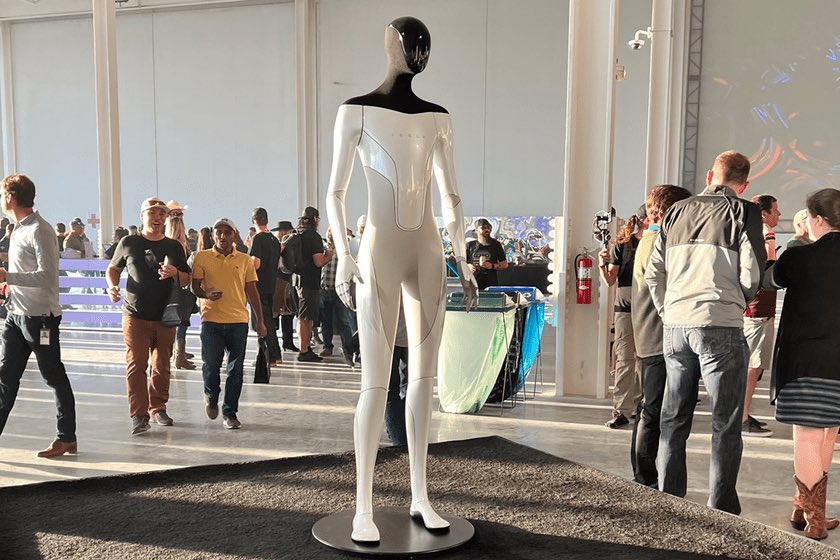
Elon Musk revealed a new capability that Tesla Optimus should have, and it is one that will surely surprise many people, as it falls outside the CEO’s scope of his several companies.
Tesla Optimus is likely going to be the biggest product the company ever develops, and Musk has even predicted that it could make up about 80 percent of the company’s value in the coming years.
Teasing the potential to eliminate any trivial and monotonous tasks from human life, Optimus surely has its appeal.
However, Musk revealed over the weekend that the humanoid robot should be able to utilize Tesla’s dataset for Full Self-Driving (FSD) to operate cars not manufactured by Tesla:
Probably
— Elon Musk (@elonmusk) October 5, 2025
FSD would essentially translate from operation in Tesla vehicles from a driverless perspective to Optimus, allowing FSD to basically be present in any vehicle ever made. Optimus could be similar to a personal chauffeur, as well as an assistant.
Optimus has significant hype behind it, as Tesla has been meticulously refining its capabilities. Along with Musk’s and other executives’ comments about its potential, it’s clear that there is genuine excitement internally.
This past weekend, the company continued to stoke hype behind Optimus by showing a new video of the humanoid robot learning Kung Fu and training with a teacher:
🚨 Some have wondered if this is ‘staged’ or if Optimus is teleoperated here
Elon Musk said this is completely AI https://t.co/N69uDD6OVM
— TESLARATI (@Teslarati) October 4, 2025
Tesla plans to launch its Gen 3 version of Optimus in the coming months, and although we saw a new-look robot just last month, thanks to a video from Salesforce CEO and Musk’s friend Marc Benioff, we have been told that this was not a look at the company’s new iteration.
Instead, Gen 3’s true design remains a mystery for the general public, but with the improvements between the first two iterations already displayed, we are sure the newest version will be something special.
Investor's Corner
Cantor Fitzgerald reaffirms bullish view on Tesla after record Q3 deliveries
The firm reiterated its Overweight rating and $355 price target.
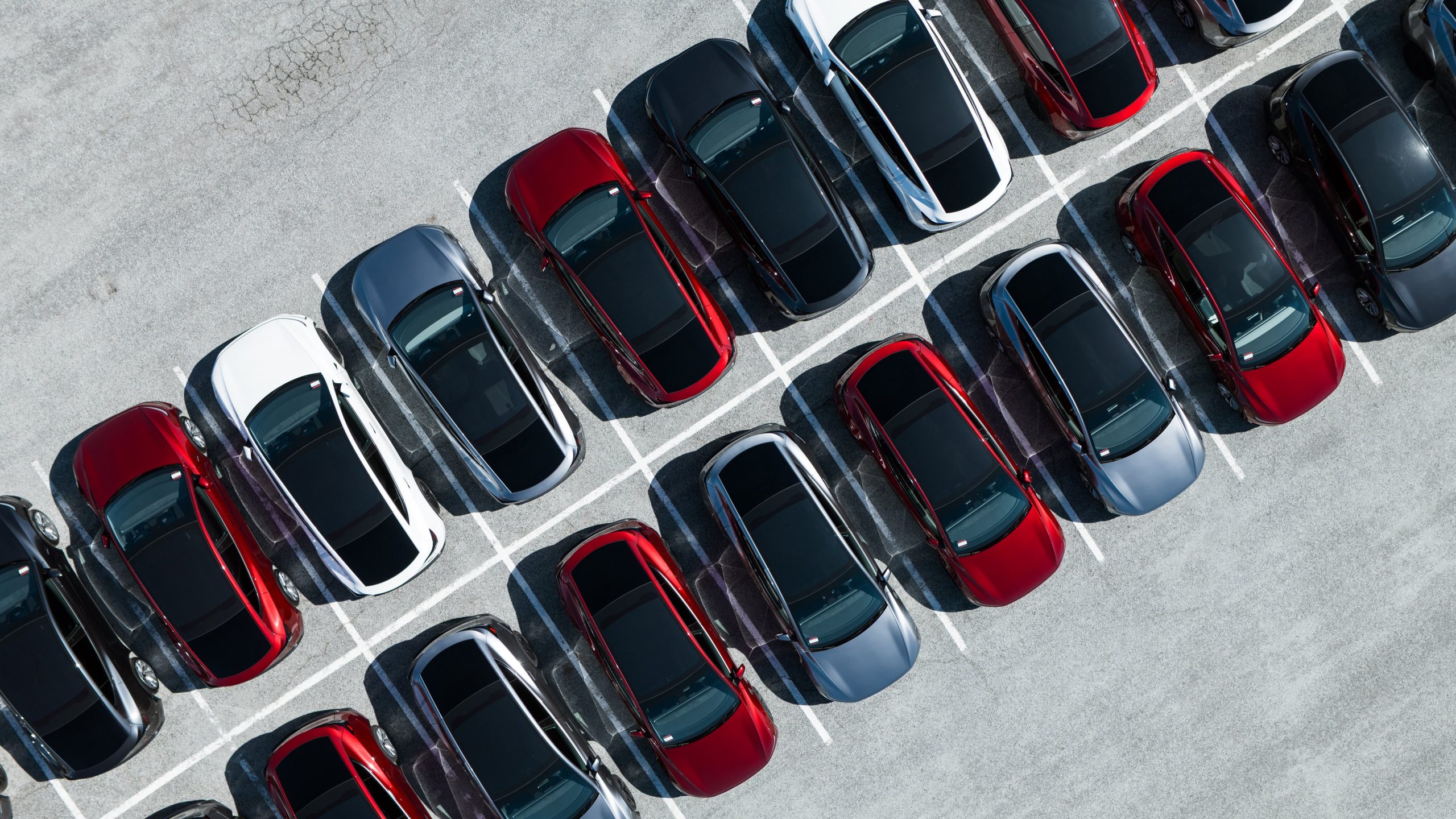
Cantor Fitzgerald is maintaining its bullish outlook on Tesla (NASDAQ:TSLA) following the company’s record-breaking third quarter of 2025.
The firm reiterated its Overweight rating and $355 price target, citing strong delivery results driven by a rush of consumer purchases ahead of the end of the federal tax credit on September 30.
On Tesla’s vehicle deliveries in Q3 2025
During the third quarter of 2025, Tesla delivered a total of 497,099 vehicles, significantly beating analyst expectations of 443,079 vehicles. As per Cantor Fitzgerald, this was likely affected by customers rushing at the end of Q3 to purchase an EV due to the end of the federal tax credit, as noted in an Investing.com report.
“On 10/2, TSLA pre-announced that it delivered 497,099 vehicles in 3Q25 (its highest quarterly delivery in company history), significantly above Company consensus of 443,079, and above 384,122 in 2Q25. This was due primarily to a ‘push forward effect’ from consumers who rushed to purchase or lease EVs ahead of the $7,500 EV tax credit expiring on 9/30,” the firm wrote in its note.
A bright spot in Tesla Energy
Cantor Fitzgerald also highlighted that while Tesla’s full-year production and deliveries would likely fall short of 2024’s 1.8 million total, Tesla’s energy storage business remains a bright spot in the company’s results.
“Tesla also announced that it had deployed 12.5 GWh of energy storage products in 3Q25, its highest in company history vs. our estimate/Visible Alpha consensus of 11.5/10.9 GWh (and vs. ~6.9 GWh in 3Q24). Tesla’s Energy Storage has now deployed more products YTD than all of last year, which is encouraging. We expect Energy Storage revenue to surpass $12B this year, and to account for ~15% of total revenue,” the firm stated.
Tesla’s strong Q3 results have helped lift its market capitalization to $1.47 trillion as of writing. The company also teased a new product reveal on X set for October 7, which the firm stated could serve as another near-term catalyst.
-
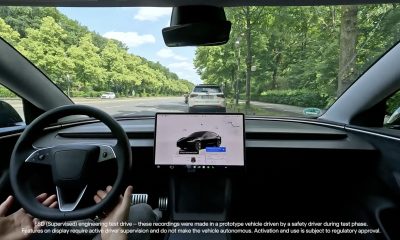
 Elon Musk2 weeks ago
Elon Musk2 weeks agoTesla FSD V14 set for early wide release next week: Elon Musk
-
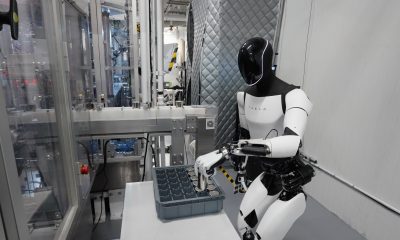
 News1 week ago
News1 week agoElon Musk gives update on Tesla Optimus progress
-
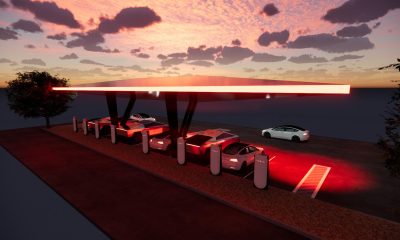
 News2 weeks ago
News2 weeks agoTesla has a new first with its Supercharger network
-
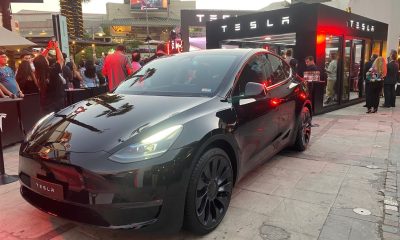
 News2 weeks ago
News2 weeks agoTesla job postings seem to show next surprise market entry
-
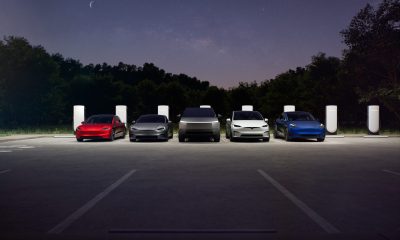
 News2 weeks ago
News2 weeks agoTesla makes a big change to reflect new IRS EV tax credit rules
-
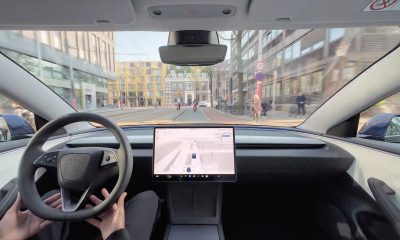
 Investor's Corner1 week ago
Investor's Corner1 week agoTesla gets new Street-high price target with high hopes for autonomy domination
-
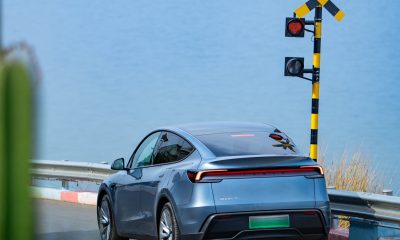
 Lifestyle1 week ago
Lifestyle1 week ago500-mile test proves why Tesla Model Y still humiliates rivals in Europe
-

 News1 week ago
News1 week agoTesla Giga Berlin’s water consumption has achieved the unthinkable









